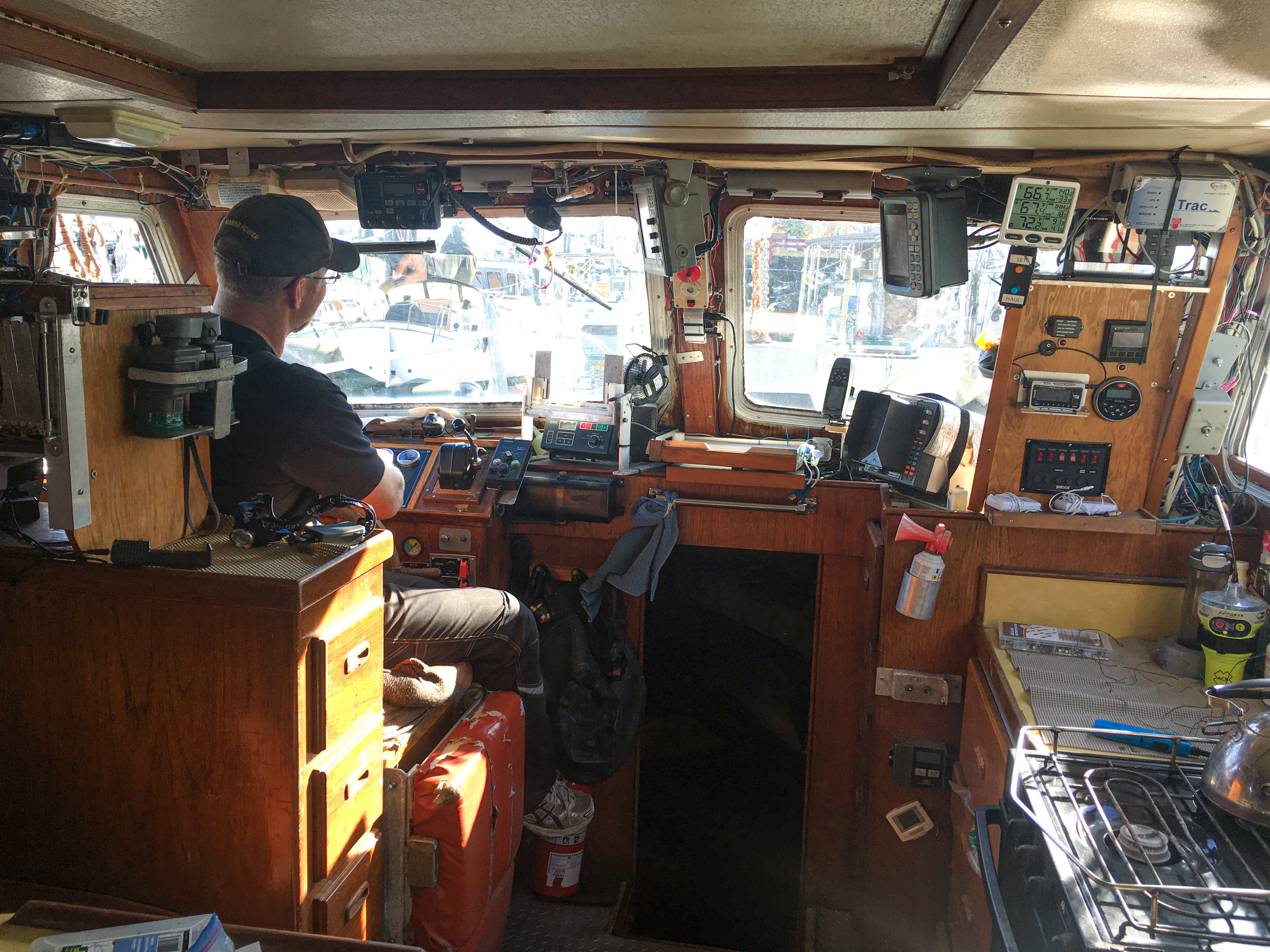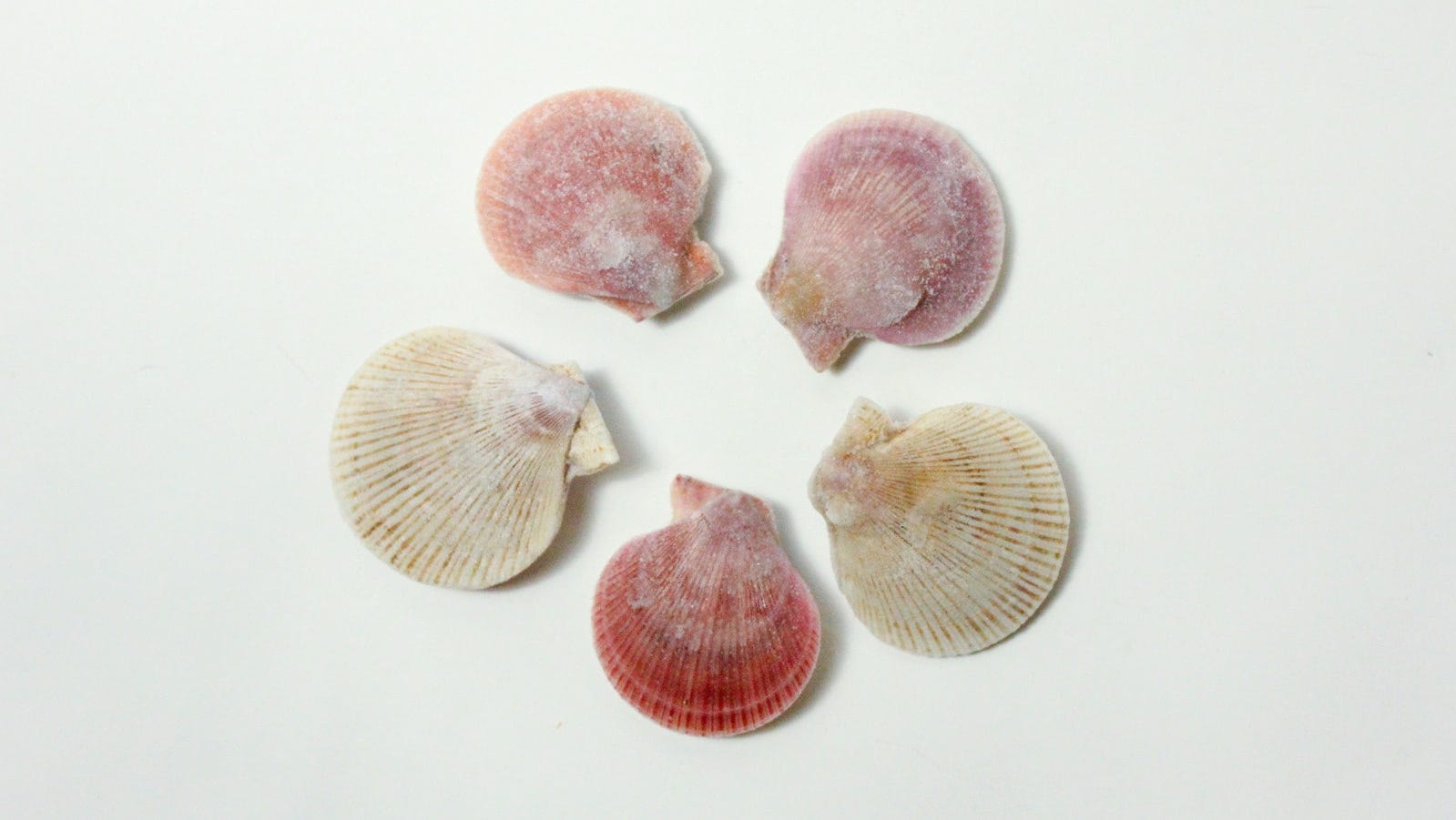Stories at Sea is a series of interviews highlighting artisanal fishermen, fisheries, and suppliers who are furthering the seafood industry within Canada. We are here to tell their stories and to pass on their wisdom to the greater community.

West Coast Wild Scallops is a small scale fishery that commercially harvests wild, swimming scallops, the only wild species of scallop in BC abundant enough for commercial harvest. Through their slow fishing techniques and their custom designed trawl, there is next to no by-catch produced. This is why West Coast Wild Scallops is Ocean Wise recommended. A family owner-operator steeped in their community, Joel and Melissa are also heavily involved with the BC Young Fisherman Network.
We sat down with Melissa to hear more about how her and Joel got their start in the industry, what’s in store for West Coast Wild Scallops, and how shoppers can better support local, sustainable seafood options.

Hayley from Coastline: How did you and Joel get your start in the fishing industry?
Melissa Collier: My husband is a 4th generation fisherman, on his mom’s side. He grew up on and off the water, deckhanding on the family boats since he was a young kid. He spent a good portion of each summer out at sea, it was always a part of his life. His dad was a long time logger, but transitioned to fishing in the 90s with the purchase of their boat, The Lisa Jess, the same boat Joel and I operate today. Joel’s father, Peter, learned the trade through trial and error and through the guiding hand from Marilyn’s family (his wife).
Joel’s family was passionate about fishing, but saw the writing on the wall about how the fishing industry was in decline, so they encouraged Joel to look at other options outside of fishing. In a large part to the advice of his parents, Joel decided to leave BC for Alberta. Joel attended the University of Alberta, where he obtained his Petroleum Engineering degree and where we first met. After university, we both worked for several years in the oil industry, Joel as an engineer and myself as a biologist for an Environmental Consulting company. In 2009, my career took me to BC, while Joel traveled back and forth between provinces. We eventually moved back to Joel’s home town but he still commuted. At first to AB, then later internationally, to Australia.
He returned to fishing in 2015, when his parents were looking to retire from the trade. He worked along side his father, eventually taking over the family business. Joel loves the lifestyle, being out on the water with his office being outside. It’s a lot of work and a lot of time, but our quality of life is better than what it was before. He is away a lot, but it’s a different type of working.
I became heavily involved in 2017, when we started the scallop side of the business. I was on maternity leave at the time. Between the kids and the scallop business, I decided not to return to my career and to instead focus on our fishing business and our family. I manage all marketing, sales and administration of our scallop business as well as helping Joel with our other fisheries. With two young kids, I can’t go out on the boat that often. I make small trips and fish part time with Joel.

Why scallops?
When we started fishing Swimming Scallops, there was no market for them. We couldn’t approach sales in the same way, by going to a first receiver or processor. In order to market and sell our own catch, we created West Coast Wild Scallops.
We commercially harvest and sell wild Swimming scallops. There are two species that co-inhabit the same area: Pink and Spiny. They are a small scallop, the shell the size of your palm and their meat the size of a Looney. They are the only wild species of scallop in BC abundant enough for commercial harvest. All other scallops from BC are farmed. In Western society we typically only eat the white meat inside, but we encourage people to try the whole animal, similar to how you would eat mussel or clam. The mantle and other parts of the animal have a great taste and texture and it would be wasteful not to consume it. Swimming Scallops are very delicious and versatile. You can steam, bake, boil, BBQ, or just eat them raw.
Joel’s uncle introduced us to scallops, being one of the original fishermen that were involved in the experimental fishery. The fishery was developed in the 80’s as a coordinated effort between the DFO and the local fishermen. It stayed in its exploratory and experimental phase until it went to license in 2015. For commercial scallop harvest, we use a custom trawl specifically designed for swimming scallops. It was created by the original founding fishermen in and has since won the Romeo La Blanc Award for responsible fishing. With only 6 licenses to access the fishery, of which two are active, the fishery is extremely sustainable and small scale.
As a result of our trawl design and slow speeds, our bi-catch is next to nothing. Most seasons we catch around 10 individuals, like sea stars and urchin. They are returned to where they came from unharmed. We have steel runners that do touch the ocean floor, however, they gently bounce along and their sole function is to keep the net off the bottom. There is no raking or scouring, so there is minimal damage to the sea bed. We also return undersized scallops back to the bed they came from. Their survival rate is 97- 98%. Due to overall management of the fishery and the style of fishing, the fishery is environmentally friendly and sustainable.

What is your role within West Coast Wild Scallops?
A fisher. I technically run our business, but I call myself a fisherman. With fishing you have to do a bit of everything. For example, Joel has to know how to fish, how to be a mechanic, a plumber, and an electrician. From my side it’s the same concept, except I have to know the fishing side, the business, sales, and marketing.
What is your day to day like?
There’s no normalcy. Our entire world revolves around fishing and our two young kids. A day in the life of us is different depending on the season. When Joel is out fishing, I am trying to run the business and keep our house and kids operating. I support him as well with supply runs, meal making, paperwork, and whatever else is needed. Anytime he comes into port on the island, I am driving up to deliver supplies. When he’s home, we try to get in more family time.
We do have deckhands that support and fish with my husband, but eventually, it will be just us and our kids out there. They’re too young still, but we’ve started doing small trips with them. Until they’re older, it will continue to be Joel and depending on the season, his two deckhands.
What are you putting off right now?
If I had time and money, I would try to get out in the market and get our scallops in front of people. We’ve had the best success by being there in person, telling our story while customers taste our scallops. I want to be out there telling our story and showing how your purchase makes a difference not only for our family, but also our environment.

Consumers can contribute by supporting local product and by knowing where your seafood is coming from. Knowing your fish is coming from good operation, that’s using good handling techniques. Knowing the risk, sacrifice, and hard work that goes into their seafood.
What do you see as the future of seafood? What do we need to do to ensure future generations can enjoy seafood the same way we do?
The future scares me a little bit, it’s a wide spread thing. More and more multi generational fishermen don’t fish because it’s getting harder to catch fish. There are constant changes to regulations and political decisions that have huge impacts on the fishing industry, plus the expense to fish is always going up. It’s getting harder and harder to make a living in the fishing industry. What I’d like to see is more support for small family fishermen, by appreciating where your product is from and how it’s caught.
I am a big supporter of sustainability and slow-fish. I believe there is a place for aquaculture, but only if done properly, safely, and environmentally sound. I also believe there will always be a place and demand for wild, small scale food. In the meantime, its nerve-raking to see how things will actually play out. Us fishermen have a lot of things going against us, whether it be new regulations, changes in the fishing seasons, or new operational regulations outside of being on the water. I hope the fishing industry can keep going, being able to survive and push through.
Consumers can contribute by supporting local product and by knowing where your seafood is coming from. Knowing your fish is coming from good operation, that’s using good handling techniques. Knowing the risk, sacrifice, and hard work that goes into their seafood. It’s risky being on waters, whether it’s protected or out in the open. A lot of things can go bad so quickly. There’s a sacrifice in being away from your family more than you’re around. Most people don’t realize that fishermen are away for months at a time. The fish aren’t near our home ports, we travel hours and sometimes days to get to where they are. During prawn and salmon season (May to September), we see Joel maybe three or four times for a few hours at a time.
There’s a ton of hard work and labour that goes into products from a good operation. Consumers could better understand the value of certain types of seafood and why it costs the way it does. The more the consumer knows and understands the fishing industry and where their food comes from, the better they can use their purchasing power to support BC fishing families. Supporting local is how you’re going to keep small family fishermen in business. If consumers can recognize the value, as it will cost a bit more, we will all be better for it. Similar to how people buying higher end organic food or choosing products grown in BC.

What are you most excited about in your life?
Fishing. I’m excited for the days when our entire family can be on the boat, fishing together. It’s hard on our family, Joel is gone a lot. He’s gone May-August with only a three hour visit a couple times during that period. During the winter he is also on and off the water fishing scallops, which can be anywhere from a few days to a couple of weeks. When he walks out the door, my kids often ask if he’s coming home that night or if he’s going fishing. It’s hard on our family and on him. I send him a lot of videos, so he knows what’s going on, but it’s not the same. I am really excited for the day when we can all be out on the boat together, enjoying that lifestyle and spending quality time out on the water.
When are you happiest?
When Joel comes home. There’s a huge relief and a lot of joy when he comes home safe from the season. Seeing the kids’ reaction, the look on their faces, would melt anyone’s heart. The moment reminds me of a monument down in California called She is We. It represents a family sitting at shore, waiting for their fisherman to come home.
Every time I hear about a fisherman lost, I think of that monument. I really identify with She is We; we are the family waiting at home hoping he’ll make it back to us. Things go bad out there. I’ve been out when it’s scary and waters are rough. Its mother nature and she can be mean. That moment, when he comes home, there’s a lot of happy there.
To keep up with our coverage of commercial harvesters like Joel and Melissa, and to see how Freshline is building the future of food, subscribe to our newsletter.





